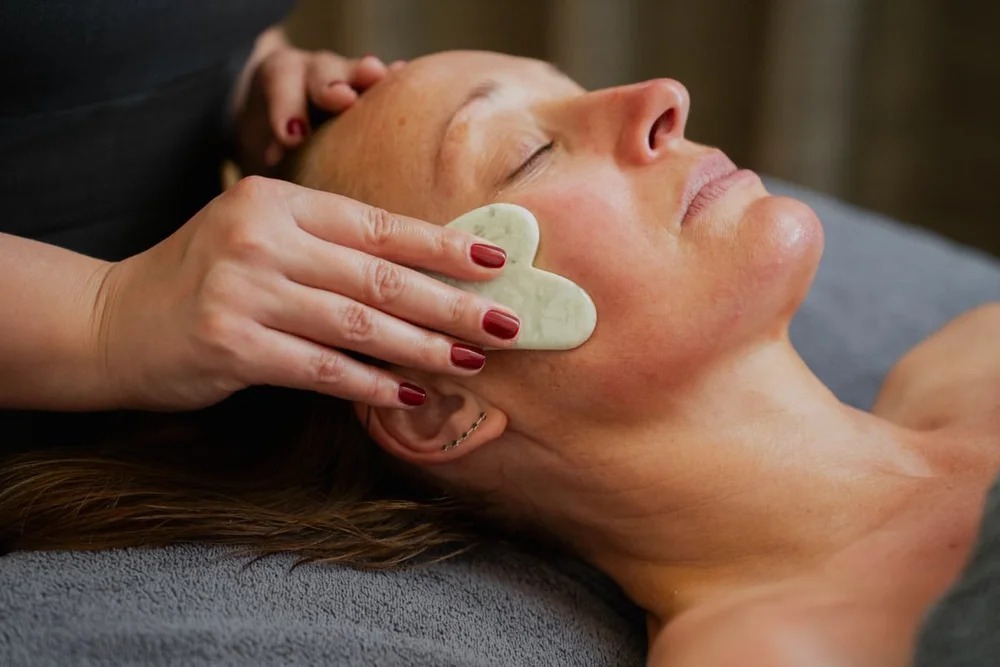Looking for skin treatments that really make a difference—without surgery or confusing jargon? You’re in the right place. Below are seven dermatologist-backed facial treatments that people love in 2025. We’ll explain the 7 facial treatments dermatologists trust in 2025—what they do, who they’re for, and how to choose the best facial treatment for wrinkles.
1) HydraFacial (Hydradermabrasion): Fast Glow, Little Downtime
What it does: A handheld device cleans, gently peels, vacuums out gunk, and infuses hydrating serums—usually in 30–60 minutes. Most people walk out with smoother, brighter skin the same day.
Why it works: Studies suggest HydraFacial can improve skin clarity and texture (it’s even been studied for acne), while major clinics list it as a non-invasive resurfacing option with no downtime.
Best for: Dullness, clogged pores, and “big day tomorrow” glow-ups.
2) Chemical Peels: Tried, True, and Customizable
What they do: A chemical solution removes the top layer(s) of skin to reveal fresher skin underneath. Peels can soften fine lines, even tone, and help some types of acne and discoloration. Strength ranges from light to deep, based on your goals.
What to expect: Your dermatologist will guide aftercare. Redness is normal; deeper peels need more healing time and carry higher risks, which your provider will review.
Best for: Fine lines, uneven tone, sun spots, certain acne concerns.
3) Microneedling (and RF Microneedling): Collagen Support You Can See
What it does: Tiny needles create micro-channels that kickstart collagen. It can smooth texture, soften fine lines, and reduce the look of acne scars and large pores. Adding radiofrequency (RF) heat can tighten and firm even more.
Downtime & feel: Expect temporary redness or pinpoint bleeding and a day or two of “sunburn-like” pinkness. RF skin tightening options usually have a back-to-work time of within a day, depending on the area treated.
Best for: Acne scars, crepey texture, early laxity, and fine lines.
4) LED Light Therapy: Gentle Help for Acne and Aging
What it does: Uses specific light wavelengths (often red or blue). Red light is used for signs of aging; blue light targets acne bacteria. It’s gentle and safe for most skin types.
What the evidence says: Research and expert reviews call the results promising (especially for acne and mild photoaging), but not a miracle—consistency and professional-grade devices matter.
Best for: Mild to moderate acne, dullness, and fine lines—especially if you want a no-downtime add-on.
5) IPL “Photofacial”: Color and Texture Tune-Up
What it does: Intense Pulsed Light (IPL) evens out sun spots, redness, and blotchy tone; it’s also used in some acne protocols. Many people like IPL for the way it balances overall color and clarity without surgery.
What to expect: Multiple sessions are common. You’ll need good sun protection before and after.
Best for: Sun damage, redness, uneven tone, and certain acne concerns.
6) Microdermabrasion: Quick Polish for Smoother Skin
What it does: A device gently sands away the outermost dead skin layer. This can brighten, smooth mild roughness, and help skincare absorb better. It’s milder than peels and lasers.
What to expect: Temporary pinkness or dryness can happen; sunscreen after is a must. It’s often done in a short series for best results.
Best for: Dullness, rough texture, and maintenance between bigger treatments.
7) Laser Resurfacing (Fractional/Ablative/Non-Ablative): Big Results, With Varying Downtime
What it does: Laser energy removes or heats targeted skin layers to trigger new collagen and reveal smoother skin. It can improve wrinkles, scars, and tone. There are many types; your dermatologist will match the device to your skin and goals.
What to expect: Non-ablative lasers usually have little downtime; ablative or fractional ablative lasers can deliver bigger changes with longer healing and more aftercare. Risks and recovery vary and will be reviewed before treatment.
Best for: Deeper wrinkles, etched lines, acne scars, and significant sun damage.
How to Choose the Best Facial Treatment for Wrinkles in 2025
- Early fine lines & dullness: Try a HydraFacial, light chemical peel, or LED course to refresh skin with minimal downtime.
- Texture, pores, and light laxity: Microneedling (with or without RF) can smooth and firm over a few sessions.
- Pigment, rednes, and “blotchy” tone: IPL or a suitable laser plan can even things out.
- Deeper lines/etched wrinkles: Fractional or ablative laser resurfacing may offer the most change, with more careful recovery. This is often where an expert makes the biggest difference.
Pro tip: Sunscreen and a simple, steady routine will stretch your results—no matter which treatment you pick.
Safety First: Simple Questions to Ask Any Provider
- Which device or peel are you using, and why for my skin? (Different tools do different jobs.)
- How many sessions will I need, and what is the downtime?
- What are the risks for my skin tone and history? (Important for lasers and deep peels.)
- What aftercare will I need to protect results?
Where to Book (and Why Skill Matters)
The tool is important—but the hands using it are everything. Look for a clinic that tailors plans and can explain trade-offs simply. If you want a friendly, personalized approach with modern options, Eye Candy Med Spa is a strong pick: they focus on subtle, natural results with cosmetic injectables and skin treatments that fit today’s “fresh, not fake” look.
The Bottom Line
2025 is all about smart, steady upgrades—not drastic changes. If you want clearer tone, smoother texture, and fewer lines, these seven treatments deliver real-world results:
- HydraFacial for instant glow,
- Chemical peels for fine lines and blotchy tone,
- Microneedling (plus RF) for collagen and scars,
- LED for gentle support against acne and aging,
- IPL for color correction,
- Microdermabrasion for quick polish, and
- Laser resurfacing when you want the biggest change.
Match the method to your skin goals, choose a skilled provider, and protect your progress with sunscreen. That’s how you get results that actually last.


